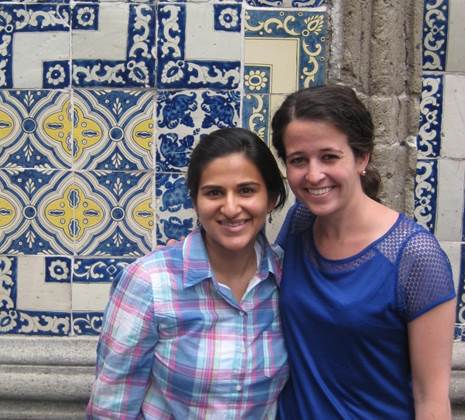
Hello, this is Heather Esper and Yaquta Fatehi of the Performance Measurement Institute at the University of Michigan (http://wdi.umich.edu/about). Our team specializes in performance measurement to improve organizations’ effectiveness, scalability, and sustainability and create more value for their stakeholders, in low- and middle-income countries.
The William Davidson Institute (WDI) uses social well-being indicators to address business challenges and improve organizational learning. We believe assessing multidimensional outcomes of well-being helps inform better internal decision making within businesses. These multidimensional outcomes move beyond economic outcome indicators such as income and savings; and include capability and relationship well-being indicators. Capability refers to constructs such as the individual’s health, agency, self-efficacy, and self-esteem. Relationship well-being refers to changes in the individual’s role in the family and community as well as the quality of the local physical environment.
For example, we conducted an impact assessment of a last mile distribution venture and focused on understanding the relationship between business and social outcomes. Through a mixed methods design, we found a relationship between employee self-efficacy (one’s belief in their ability to do certain tasks) and two major challenges the venture was facing: turnover and sales. We recommended the venture augment their current trainings to employees to increase self-efficacy which would in turn hopefully increase retention and improve sales. Based on this finding, we also recommended that certain high-priority social well-being indicators such as self-efficacy be monitored on a quarterly basis along with key business performance indicators. In another engagement, we relied heavily on the organizations’ proposed theory of change to offer examples and solutions of how to track and link socio-economic and business impacts. For example, in one enterprise, we found that their ability to retain current and recruit new micro-distributors could be influenced by sharing the improvement in standard of living experienced by the micro-distributors’ children.
Hot Tip: Social well-being data can provide insights for organizational learning. Businesses can use ‘pause and reflect’ sessions to examine such data across different teams to draw new insights, as well as discuss challenges and identify lessons learned related to collecting such data to enhance efficiency and rigor.
Lesson Learned: Embedding social metrics into existing processes often requires a monitoring and evaluation champion (i.e., a senior staff member) at the organization to help facilitate social metric data collection and utilization.
Rad Resources:
- Webinar with guest- Grameen Foundation (http://wdi.umich.edu/knowledge/multi-dimensional-impacts-enhancing-poverty-alleviation-performance-the-importance-of-implementing-multidimensional-metrics) on the value of capturing multi-dimensional poverty outcomes
- Webinar with guest- Solar Aid (http://wdi.umich.edu/knowledge/enhancing-poverty-alleviation-performance-amplifying-the-voice-of-local-stakeholders) on qualitative methods to capture multi-dimensional poverty outcomes
- Webinar with guest- Danone Ecosystem Fund (wdi.umich.edu/knowledge/quantitative-methodology-enhancing-poverty-alleviation-performance-quantifying-changes-experienced-by-local-stakeholders) on quantitative methods to capture multi-dimensional poverty outcomes
- Written for UNICEF, this guide (http://devinfolive.info/impact_evaluation/img/downloads/Theory_of_Change_ENG.pdf) explains the Theory of Change tool and its use; and Better Evaluation shares this guide (http://www.betterevaluation.org/en/resources/guide/facilitators_sourcebook_theory_of_change) on how to conduct a Theory of Change workshop with a section on how to use the tool to select indicators
The American Evaluation Association is celebrating Business, Leadership and Performance (BLP) TIG week. All posts this week are contributed by members of the BLP Topical Interest Group. Do you have questions, concerns, kudos, or content to extend this aea365 contribution? Please add them in the comments section for this post on the aea365 webpage so that we may enrich our community of practice. Would you like to submit an aea365 Tip? Please send a note of interest to aea365@eval.org. aea365 is sponsored by the American Evaluation Association and provides a Tip-a-Day by and for evaluators.

